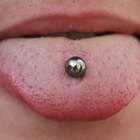The stressful, busy lives that we now lead do take their toll. Many people are affected by dark circles under the eyes, weight-gain that produces stretch marks, lack of exercise and bad eating habits that lead to cellulite. Carboxytherapy treats these beauty hazards through an injection of carbon dioxide into the affected area. The visible signs of stress and aging are thought to be caused by the lack of circulation in the affected area. The theory is that the excess carbon dioxide will trick the body into increasing the blood flow, which will work to remove these skin issues.
Bruising
Carboxytherapy involves injecting the carbon dioxide into the area that you would like to “fix” with additional blood flow. The injection can cause bruising especially when using carboxytherapy on the arms and legs.
Pain
The carbon dioxide injected into your skin also tightens it. Thus, immediately after an injection, patients may experience pain and even a tingling of the injected skin. These symptoms are said to dissipate within a few hours of the treatment.
Fatal Bubbles
Injecting a gas into the body has severe risks, especially if the needle is positioned in a blood vessel or vein. That gas bubble in the vein can push its way through the circulatory system, causing an arrhythmia in the heart or blindness in the case of blood vessels in the eyes.
Untested and Thus Unknown
Contrary to the many websites throughout the web promoting carboxytherapy, the treatment is not FDA (Food and Drug Administration) approved. Injecting carbon dioxide into the skin has also not been tested. No one really knows what the long-term effects will be. In addition, the claims that carbon dioxide is natural, and therefore will not harm the body are false. Humans can suffer from carbon dioxide poisoning, which can be fatal in high doses or with prolonged exposure.
Unregulated Materials and Practitioners
As with any unregulated beauty treatment, patients should research practitioners thoroughly. The side effects of the carboxytherapy will increase to include infection and blood borne illness when using doctors who are less than sanitary. These doctors may also cut corners, injecting something other than carbon dioxide into your body. Using the injectable carbon dioxide yourself is also hazardous. You could accidentally inject the gas into a vein or artery, which again can be fatal. There is still the uncertainty as to what is exactly in the syringe that you are injecting into your own body.
Related Articles

Subungual Warts and Treatment

Uses of Peptides

Home Remedies for Cellulite With Castor ...

Mesotherapy & Weight Loss Results

How Dangerous Is It to Pierce Your ...

Bromelain & Bruising

Pomegranate Juice & Acne

Lemon Juice & Health

What Are the Benefits of Extrapone ...

Fraxel Laser Treatment Dangers

Urea & Acne

Skin Benefits of Eating Coconut Oil

How to Shave Skin Moles

Aggressive Behavior in Adults

Chasteberry for Acne

Types of Piercing Needles

How do I Speed Up the Reversal of Face ...

Foods Containing Copper Peptides

Treatment of Razor Bumps for Black Women

Collagen & Rosacea
References
Writer Bio
Jonita Davis is freelance writer and marketing consultant. Her work has appeared in various print and online publications, including "The LaPorte County Herald Argus" and Work.com. Davis also authored the book, "Michigan City Marinas," which covers the history of the Michigan City Port Authority. Davis holds a bachelor's degree in English from Purdue University.